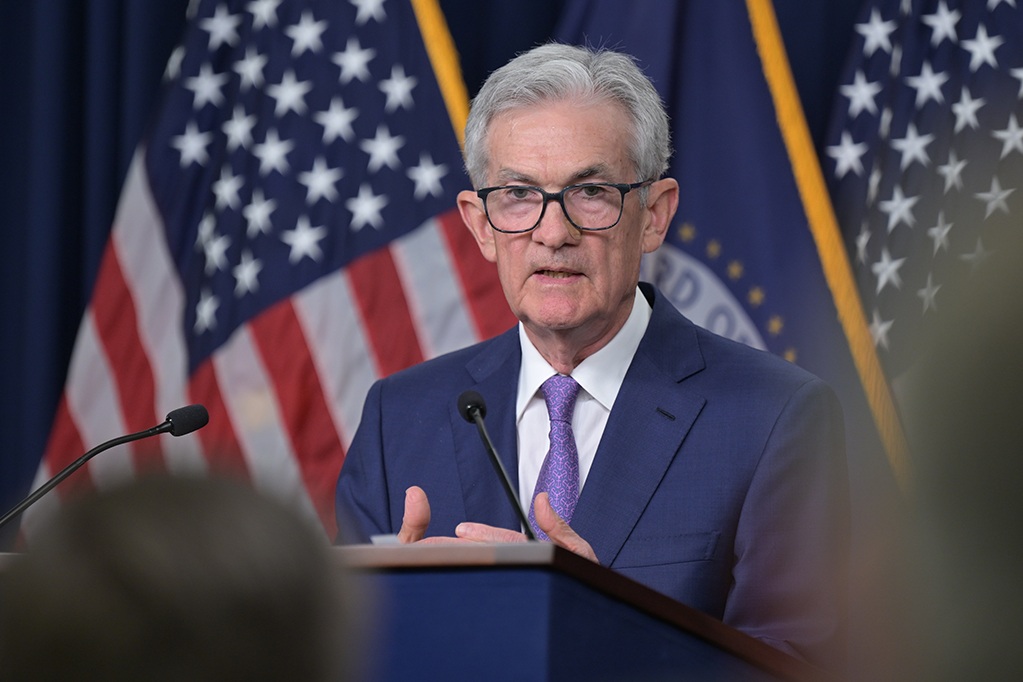Postcard from London Climate Action Week

By Rebecca Delaney
July 10 - (The Insurer) - From June 21 to 29, London hosted the seventh iteration of London Climate Action Week. Below, Sustainable Insurer reflects on the key themes and conversations across climate, transition and resilience in the (re)insurance sector.
Early in the week saw the Net Zero Delivery Summit hosted at Mansion House. Ahead of the summit, the City of London Corporation published its third edition tracking the progress of UK financial services on net-zero.
It found that the number of financial services firms committed to or adopting science-based targets is rising, albeit from a low base, with the UK ahead of other major European financial centres such as France and Germany in integrating climate considerations into decision-making.
Against a backdrop of global uncertainty, the report underlined the opportunity for the UK to accelerate its leadership as a global hub for transition finance.
Speaking on a panel at the summit, Aviva’s chief sustainability officer Claudine Blamey highlighted that financial models do not currently give adequate value to nature-related dependencies, even though these risks are beginning to feed through to balance sheets and cash flows.
“The problem then is that we treat (nature) as a free resource, so we haven't been able to incorporate that into investments,” she said.
“We even call it externalities, and until we stop calling them externalities and really internalise the costs, that's the way that we as an investment sector and as an insurance sector are really able to put money behind that.”
Blamey also called for organisations to better integrate nature into their transition planning, rather than solely focusing on carbon emissions.
This came two days before the UK government launched a consultation on proposals to mandate the development and implementation of credible transition plans for UK-regulated financial institutions, including insurers, banks and pension funds.
The consultation underlined the importance of providing investors with “rigorous and comparable” financial information regarding the future prospects of the companies in which they invest, including sustainability-related risks and opportunities.
DE-RISKING SUMMIT
Following the Net Zero Delivery Summit, Howden Group convened the De-Risking Summit (also hosted at Mansion House) on Monday afternoon, with group CEO David Howden warning in a keynote address that “the iceberg is looming” on insurability and climate risk.
To mark the beginning of London Climate Action Week, Howden published a report calling for the adoption of insurability as a basis for decision-making by governments and corporations across risk, investment and policy strategies.
“(The) central message is simple: it's time to wake up. The iceberg is looming. We've got to change course and manage our risks far better than we do at present,” said the executive.
“For too long (insurance) has been regarded as the prodigal son or forgotten sister of finance, when it should be seen as a strategic asset. In the end, people need to know that insurance is about a lot more than an annual renewal: it's about behavioural change.”
The De-Risking Summit also included a keynote speech from the UK government’s special representative for climate Rachel Kyte, who warned that the insurance industry’s role as a backstop is not sustainable as climate impacts intensify globally.
“The world is getting more complicated by the minute, but the fundamental truths that climate science is saying to us haven't changed,” said Kyte.
“We can't rely on the insurance industry to get us out of a problem when the climate impacts are starting to soar in every jurisdiction at the same time. This is not a position of resilience. If it all comes crashing down at the same time, where do we stand?”
A separate panel later in the day explored the intersection of sustainability claims with legal and insurance realities, with Howden associate director David Jones warning firms to avoid any sudden changes to their corporate sustainability strategies.
“Insurers will see that as an opportunity for anyone to say that what you were doing before was wrong, and that you've accepted that because you changed it,” he said.
“If you get those things wrong, then you're on a path to higher premiums, worse terms in your insurance, and reduced limits available. It's really key to make sure you get the same messaging across.”
RENEWABLES AND LOW-CARBON ENERGY
Conversations around underwriting low-carbon energy included a series of panels hosted by Lloyd’s, Beazley and the Sustainable Markets Initiative on the commercialisation of fusion energy.
The fusion process has the potential to provide energy security while also producing low-carbon energy that can be used to generate electricity.
It is described as “low-carbon” as, although it is carbon-free at the point of generation, keeping hot plasma confined and stable enough to produce fusion requires the construction and manufacture of a tokamak reactor, which is not a carbon-free process.
As speakers noted, the insurance industry’s engagement with fusion energy remains nascent at present amid limited understanding of the risk profile for the class and the key differences between fusion and fission, with the latter based on a chain reaction and therefore involving runaway risk.
“A lot of the risks that are associated with (fusion) are the same as you would get in any other power generation project. You've got mechanical failures, fire, construction, all those standard risks that can be managed,” said Marsh managing director Matthew Kendle at the event.
“To get this working and drive it forward, it needs people to insure it at an earlier stage. The speed at which the insurance market gets involved and actually promotes the industry and drives it forward is what will in part determine its success.”
Renewables and low-carbon energy were also in focus in a roadmap published by Aon during the week that projected that transition-related technologies are expected to record compound annual growth rates ranging from 5% to as much as 30% by 2030. See more on the roadmap on page __.
ANTICIPATORY ACTION
On Thursday, MS Amlin hosted panels on anticipatory action, with chief underwriting officer Martin Burke underlining that, while the sector continues to play an important role in supporting anticipatory action in emerging markets, it is not a complete solution for managing large-scale societal risks.
“In the end, the role of insurance has to be to help manage that residual risk that remains. In my opinion, I don't think insurance can shoulder all of that volatility for those societal resources,” he said.
The panel also emphasised the importance of maintaining a realistic focus on the extent to which the protection gap globally can feasibly be closed.
“I understand the principle behind it, but if the goal is to close the protection gap, it's not going to happen,” said Kavit Khagram, parametric and public sector reinsurance broker at Gallagher Re.
“What we should try and do is to reduce it step by step. If we just continue at the same pace we are, that protection gap will continue to widen. The challenge for the industry is to start to mobilise private sector resources, to really start just doing more, and quicker.”
At the MS Amlin event, Butch Bacani, Principles for Sustainable Insurance (PSI) programme leader and head of insurance at the U.N. Environment Programme’s Finance Initiative, announced that the PSI had launched a guide to address gaps in insurers’ assessment of nature-related impacts and risks across underwriting portfolios.
“This is a gap in the current agenda. When people talk about sustainable finance or climate finance, they really mean, more often than not, lending and investment rather than insurance,” said Bacani.
“We're closing that gap by launching this first-ever insurance-specific guide where, if you look at the totality of an insurer's underwriting portfolio, you can look to better understand nature-related dependencies, impacts, risks and opportunities.”
NATURAL DISASTER FUND
The week was rounded off with an event hosted by the Natural Disaster Fund (NDF) and CelsiusPro Group at Mansion House.
During the event, Hannover Re managing director Henning Ludolphs revealed that the reinsurer is set to double the capacity it provides to the NDF, a government-backed parametric risk capacity pool, to $100 million.
Elsewhere, CCRIF SPC CEO Isaac Anthony unveiled a digital platform for microinsurance in the Caribbean and Central America in partnership with parametric specialist CelsiusPro and subsidiary Global Parametrics, which manages the NDF.
Following the conclusion of the fourth International Conference on Financing for Development in Seville earlier this month, eyes are beginning to turn to Belém, Brazil for COP30, which will run from November 10 to 21.
.jpg)




